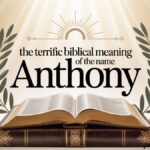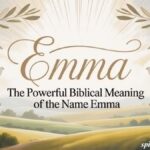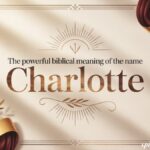12 Interesting Facts About Biblically Accurate Angels in the Book of Ezekiel refers to a collection of striking details from one of the Bible’s most vivid prophetic visions. Found in the Old Testament, Ezekiel’s description of angels—specifically cherubim—presents creatures unlike the soft, winged figures from art and culture. Instead, they appear as multi-faced, winged beings surrounded by wheels within wheels, radiant light, fire, and the unmistakable glory of God.
What makes this vision so captivating is its imagery that blends awe, mystery, and divine symbolism. Ezekiel paints a picture of angels as powerful and otherworldly, designed not to comfort but to inspire reverence and fear. Their blazing forms, covered with eyes and moving like flashes of lightning, remain some of the most unforgettable portrayals of heavenly beings in all of Scripture.
Exploring 12 Interesting Facts About Biblically Accurate Angels in the Book of Ezekiel offers readers a chance to uncover deeper layers of biblical symbolism and spiritual insight. Each fact brings forward details about their wings, faces, sounds, and divine purpose, revealing why these angels stand as embodiments of God’s omnipotence and majesty. This journey into Ezekiel’s vision not only enriches biblical understanding but also highlights how profoundly these descriptions shaped theology, art, and imagination across centuries.
Ezekiel’s Cherubim, Not Generic Angels
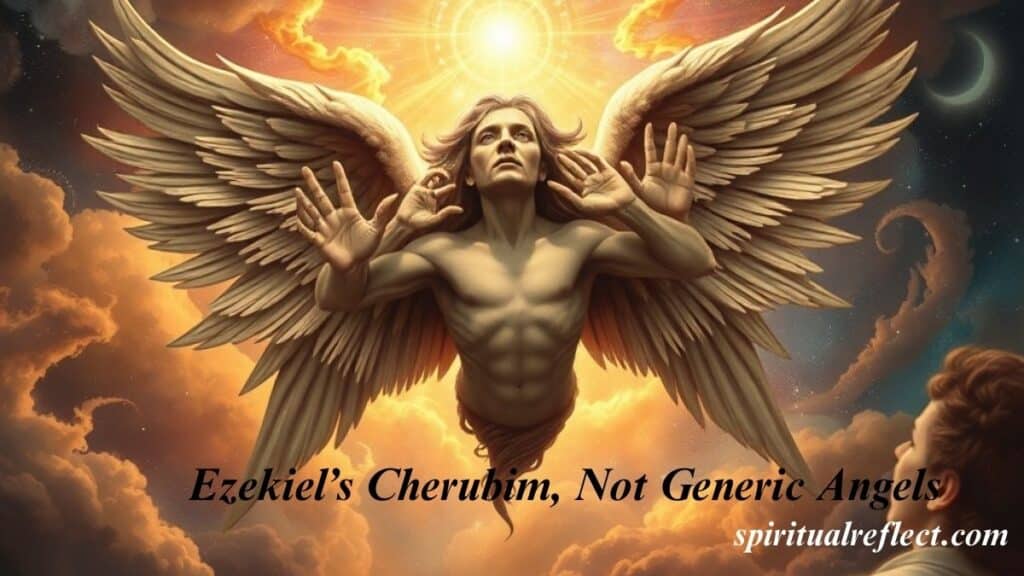
The first thing to clear up is terminology. In Ezekiel’s vision, he doesn’t use the generic Hebrew word for messenger (mal’akh). Instead, he describes cherubim, a distinct order of heavenly beings associated with God’s throne and presence.
- Cherubim first appear in Genesis 3:24, guarding the entrance to Eden with flaming swords.
- In the Old Testament, they are portrayed as throne-bearers, symbolizing divine power and holiness.
- By Ezekiel’s time, cherubim had become central symbols of God’s divine presence in the Temple.
So while modern readers may lump them under “angels,” Ezekiel is seeing something much more specific—supernatural beings of glory who act as carriers of God’s sovereignty.
Four Faces—Symbols of Divine Attributes
One of the most striking features in Ezekiel’s vision is that each cherub has four faces. Ezekiel 1:10 describes them as:
- The face of a human
- The face of a lion
- The face of an ox (or calf)
- The face of an eagle
Each face isn’t random—it carries deep symbolic meaning:
| Face | Symbolism | Representation of God |
|---|---|---|
| Human | Intelligence and wisdom | God’s rational mind |
| Lion | Courage and kingship | God’s royal authority |
| Ox | Strength and service | God’s enduring power |
| Eagle | Swiftness and divinity | God’s transcendence |
Scholars often link this imagery to the four corners of creation, showing that God rules over all life—human, wild, domestic, and heavenly. Later Christian tradition even connected these four faces to the four Gospel writers: Matthew (human), Mark (lion), Luke (ox), and John (eagle).
Four Wings—For Both Covering and Flying
Each cherub has four wings (Ezekiel 1:6). Two wings stretch upward, joining with those of the other beings, while the other two cover their bodies.
This dual function matters:
- Covering wings: Symbolize reverence and holiness, concealing the mystery of God’s nature.
- Extended wings: Indicate mobility, allowing them to move wherever the Spirit directs.
The covering wings remind us of the seraphim in Isaiah 6, who used their wings to veil themselves before God’s overwhelming glory. Wings, in biblical symbolism, often point to divine protection and the swiftness of God’s messengers.
Wheels Within Wheels—A Multidimensional Vision

Perhaps the most mysterious part of Ezekiel’s prophecy is the description of wheels within wheels (Ezekiel 1:16–18). Each wheel intersected with another, creating a kind of gyroscopic structure capable of moving in any direction without turning.
- The wheels weren’t static; they “sparkled like beryl,” a gem of shimmering green-blue.
- The movement was omnidirectional, symbolizing God’s omnipresence—He moves freely throughout the universe.
- The image suggests multidimensionality, almost like a vision of celestial machinery beyond human comprehension.
Some interpreters have even compared these wheels to the imagery of modern science fiction—flying mechanisms or interdimensional portals. But in the ancient world, they symbolized divine mobility: God is not bound to a temple or a single location.
Covered with Eyes—Symbols of Omniscience
Another startling detail: the rims of the wheels were covered with eyes (Ezekiel 1:18).
In biblical symbolism, eyes represent:
- Omniscience – God’s ability to see all things at once.
- Vigilance – nothing escapes divine attention.
- Eternal watchfulness – continuous awareness over creation.
This isn’t the only place we see this imagery. In Revelation 4:6-8, John also describes creatures covered in eyes, reinforcing the same idea: God’s omniscience is absolute.
Movement Like Lightning—Speed and Power
Ezekiel 1:14 says the cherubim “darted back and forth like flashes of lightning.”
Lightning in the Bible carries strong associations:
- Divine power – lightning often accompanies theophanies (manifestations of God).
- Judgment – a reminder of God’s authority to punish sin.
- Suddenness – indicating that God acts quickly and decisively.
By describing these beings as moving like lightning, Ezekiel highlights their overwhelming energy and unstoppable power.
Fiery and Glowing Presence
The cherubim radiated with a fiery appearance, described like “burning coals of fire” (Ezekiel 1:13).
Fire in the Bible often means:
- Holiness and purity – fire refines and purifies.
- Judgment – God consumes sin with fire.
- Divine glory – a visual expression of God’s presence.
The fiery glow shows that cherubim are not ordinary beings—they carry the very light and glory of God wherever they go.
Human Hands Beneath the Wings
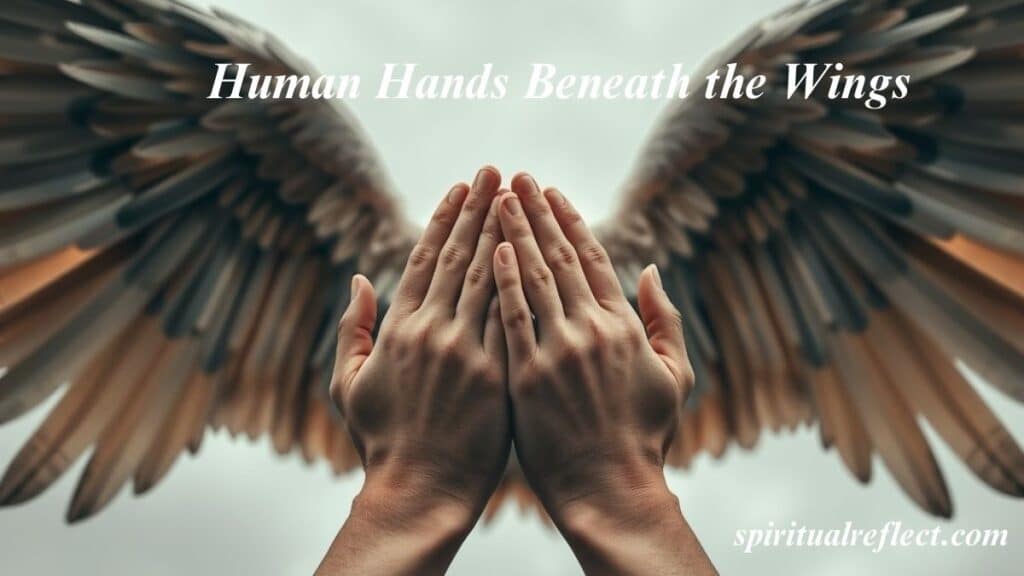
In Ezekiel 1:8, the prophet notices human hands under the wings of the cherubim.
This strange detail signals something profound:
- Hands symbolize action – God works in the world through His heavenly servants.
- Human likeness – though supernatural, they still connect to humanity.
- Power to intervene – cherubim act as executors of God’s will.
Unlike statues or lifeless symbols, these are living creatures capable of real influence and divine action.
Voice Like Roaring Waters
When the cherubim moved, Ezekiel heard a thunderous noise, “like the voice of the Almighty” (Ezekiel 1:24).
That sound is compared to:
- Roaring waters – overwhelming and unstoppable.
- An army marching – signifying order and strength.
- The Almighty’s voice – a direct association with divine authority.
This auditory imagery emphasizes that being in God’s presence is not gentle or tame—it is overwhelming, even frightening. The cherubim embody that spiritual awe.
Throne Above the Cherubim—God’s Sovereignty
Above the heads of the cherubim, Ezekiel sees a crystal-like expanse, and above that, the throne of God Himself (Ezekiel 1:22–26).
This vision reminds us:
- The cherubim are throne-bearers, not independent rulers.
- Their purpose is to uphold God’s sovereignty.
- They reveal the connection between heaven and earth, serving as living carriers of divine majesty.
This throne imagery later influenced Jewish mysticism and Christian visions of heaven, where God’s throne is always surrounded by angelic beings.
Living Beings, Not Statues
Ezekiel repeatedly calls them “living creatures” (chayot in Hebrew). This is important—he stresses they are alive, dynamic, moving wherever the Spirit directs.
Unlike the carved cherubim over the Ark of the Covenant in Solomon’s Temple, these beings are not symbolic statues. They breathe, act, and interact with divine revelation.
This emphasizes God’s living presence, not a static image or relic.
Theological Interpretations Through History
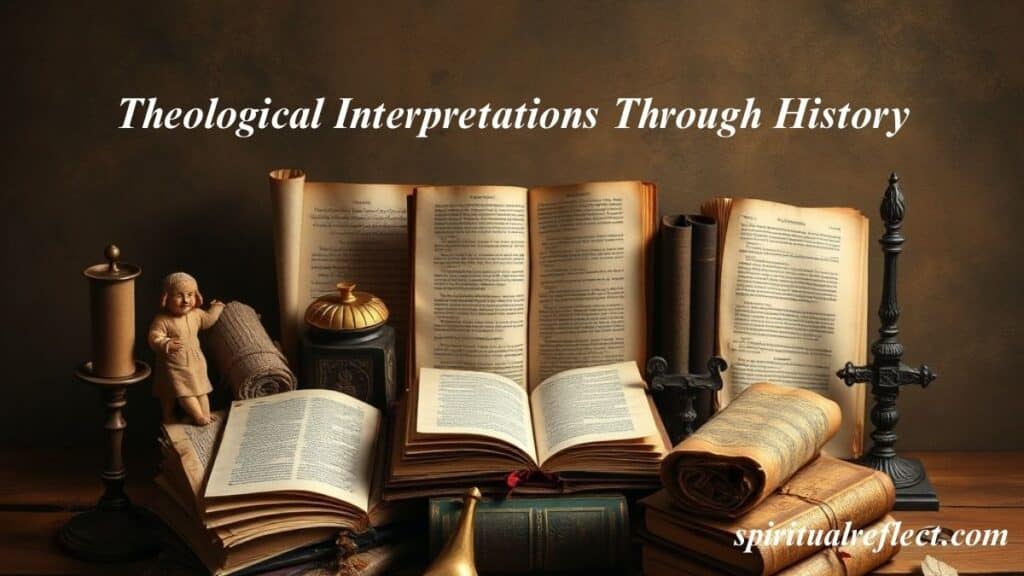
Throughout history, Ezekiel’s vision has inspired countless interpretations:
- Jewish commentators like Rashi saw the cherubim as mysteries of creation, too complex for human understanding.
- Christian theologians such as Augustine connected the four faces to the four Gospels, making them symbols of the Christian message.
- Medieval art often portrayed cherubim as terrifying, many-eyed beings, echoing Ezekiel’s vivid description.
- Modern interpretations sometimes see the cherubim as metaphors for cosmic order, or even as inspiration for fantasy art and literature.
This diversity shows the enduring fascination with Ezekiel’s vision—it continues to shape how we think about angels, glory, and the divine presence.
Key Takeaways About Ezekiel’s Angels
To summarize, here are the most important insights from Ezekiel’s vision of biblically accurate angels:
- They are cherubim, not generic angels.
- Each has four faces symbolizing God’s attributes.
- They possess four wings, for both reverence and movement.
- Their wheels within wheels symbolize God’s omnipresence.
- They are covered with eyes, signifying divine omniscience.
- They move like lightning, representing power and judgment.
- Their fiery appearance reflects holiness.
- They have human hands, symbolizing divine action.
- Their roaring sound reflects God’s authority.
- They carry the throne of God, demonstrating His sovereignty.
- They are living beings, not lifeless symbols.
- They’ve shaped theology, art, and imagination for centuries.
Conclusion
The study of 12 Interesting Facts About Biblically Accurate Angels in the Book of Ezekiel reveals that these heavenly beings were not simple figures of beauty. They carried fire, light, and the throne of God Himself. With their four faces, four wings, and wheels full of eyes, they reflected divine wisdom, power, and holiness. Every detail in Ezekiel’s vision pointed to God’s greatness and His presence that fills all creation.
By looking closely at the 12 Interesting Facts About Biblically Accurate Angels in the Book of Ezekiel, we gain more than knowledge about angels—we gain a deeper respect for the majesty of God. These descriptions remind us that the spiritual world is vast and full of mystery. Ezekiel’s vision still inspires awe today, showing that God’s glory goes far beyond human imagination.

Rana Ahmad is the creator of Spiritual Reflect, where she shares insights on personal growth, mindfulness, and meaningful living to inspire a more intentional life.


